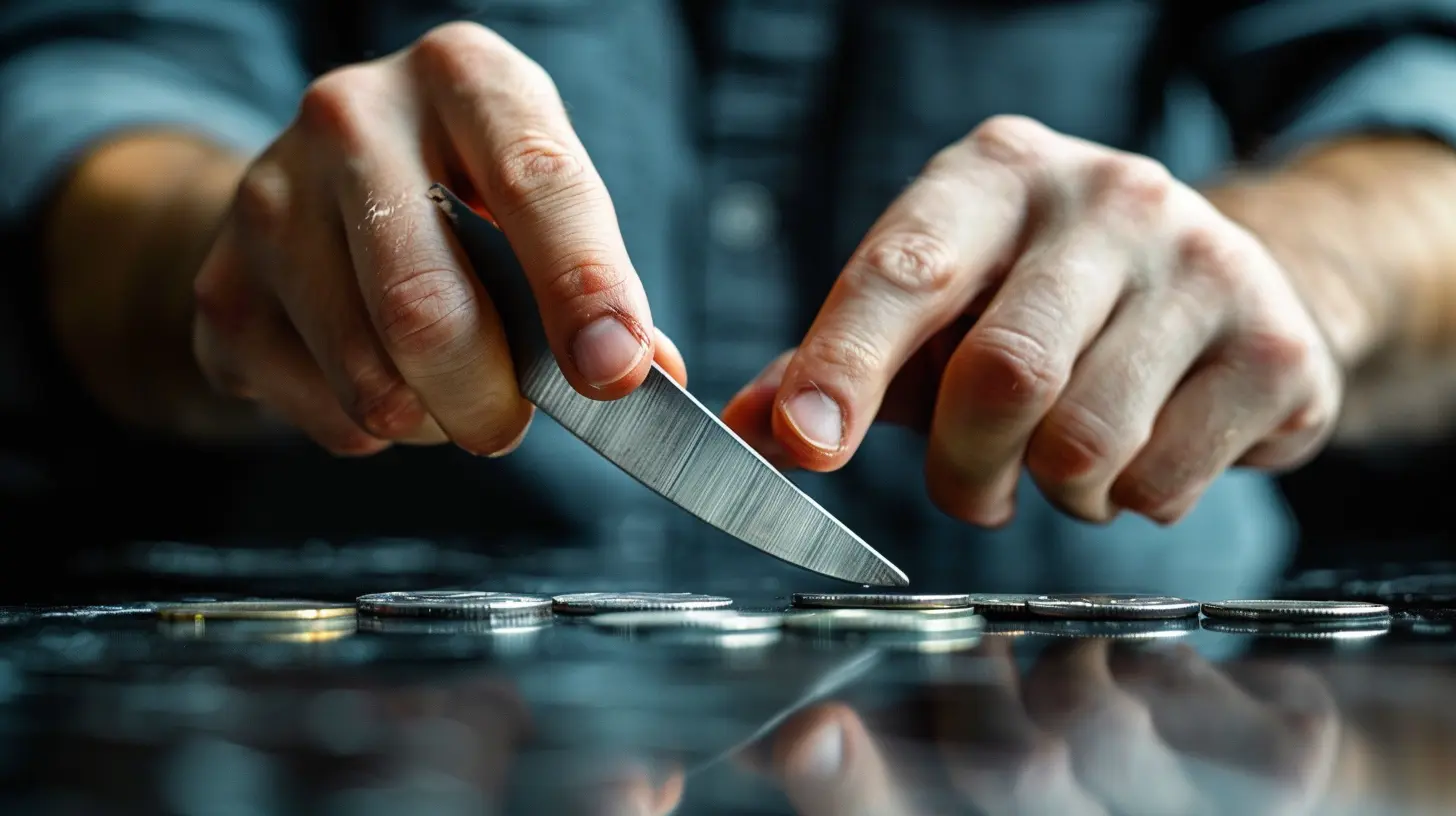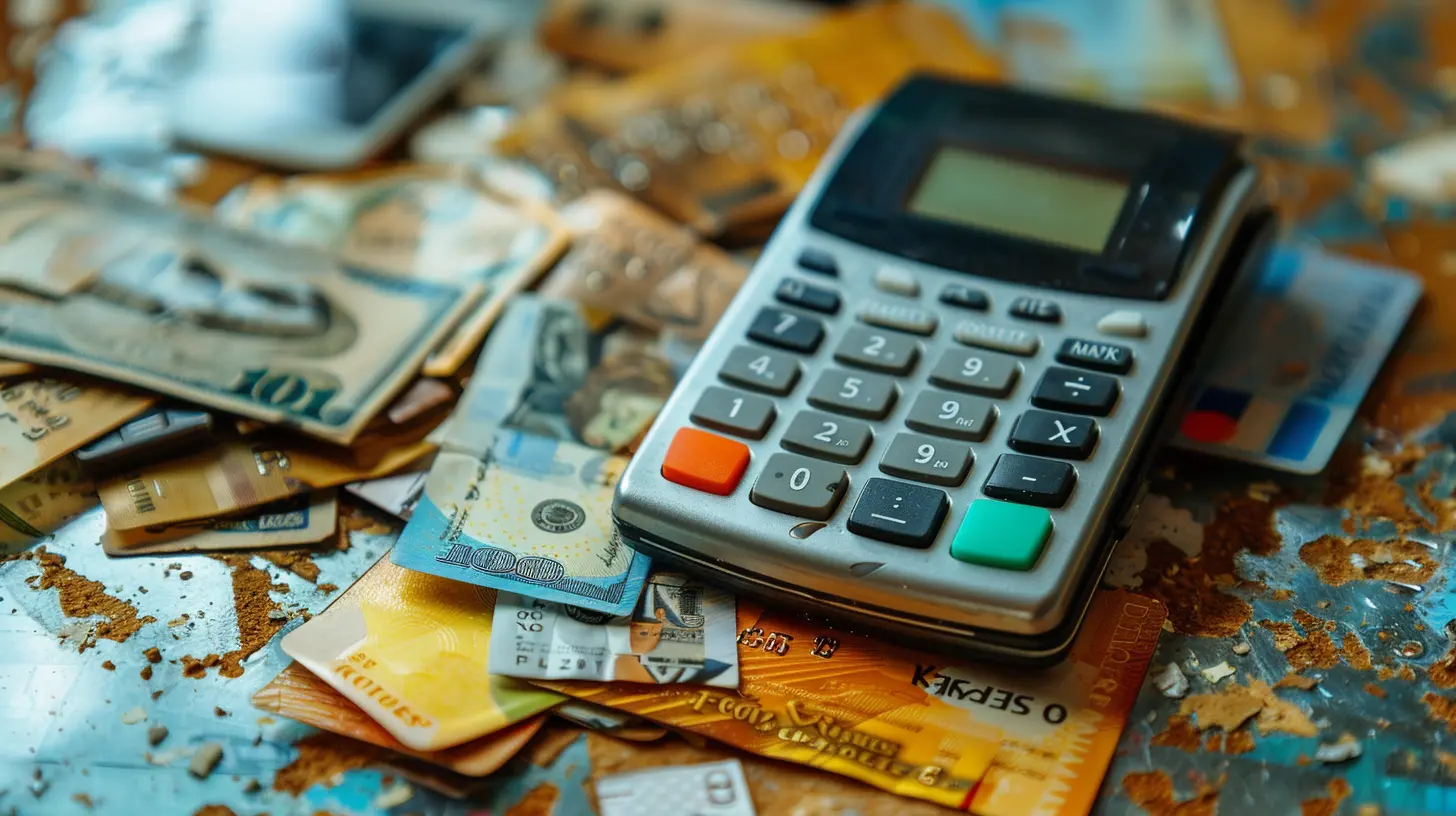The Best Ways to Cut Back on Impulse Purchases
7 November 2025
Impulse spending—it’s like a sneaky little gremlin that creeps into your budget, quietly nibbling away at your hard-earned money before you even realize what’s happening. We’ve all been there, standing in a checkout line, grabbing a fancy chocolate bar, a cool gadget, or yet another scented candle we don’t need.
But here’s the good news: you can take control and stop those impulsive splurges in their tracks. It’s not about depriving yourself; it’s about making mindful, intentional choices with your money. Ready to take charge of your finances and kick impulse buying to the curb? Let’s dive into some of the best ways to cut back on impulse purchases.

1. Identify Your Triggers
Before you can stop impulse buying, you need to understand why it happens in the first place. Ask yourself:- Are you shopping when you're stressed?
- Do you make impulse purchases when you're bored?
- Does social media influence you to buy things you don’t need?
Recognizing what triggers your spending habits is the first step to breaking free from them. If boredom is your issue, find a new hobby. If stress pushes you to shop, explore healthier coping mechanisms like exercise, meditation, or journaling.

2. Create a Budget (And Stick to It!)
A budget is like a financial GPS—it keeps you on track and helps you reach your money goals without unnecessary detours. Set clear spending limits for different categories of expenses, including a section for discretionary spending.Using apps like Mint, YNAB (You Need a Budget), or even a simple spreadsheet can help you keep track of where your money is going. When you know how much you’re allowed to spend on non-essentials, it becomes easier to say "no" to impulse buys.

3. Follow the 24-Hour Rule
Ever had that feeling of buyer’s remorse after making a spur-of-the-moment purchase? The 24-hour rule is designed to help you avoid that regret.Here’s how it works: when you find something you really want but don’t necessarily need, wait 24 hours before purchasing it. More often than not, you’ll realize you don’t need it after all. If you still want it after a full day, at least you'll know it’s a conscious decision rather than an impulsive splurge.

4. Use the Envelope System for Discretionary Spending
The envelope system is an old-school but effective way to manage spending. Here’s how to do it:- Withdraw a set amount of cash for discretionary spending at the beginning of each month.
- Divide the money into different envelopes labeled for specific spending categories (e.g., entertainment, dining out, clothing).
- Once an envelope is empty, that’s it—you’ve hit your limit for the month.
Physically seeing your money leave your hands makes spending feel more "real," which can help curb unnecessary purchases.
5. Unsubscribe from Marketing Emails and Retail Apps
Retailers are masters of temptation. If you’re constantly bombarded with "limited-time offers" and "flash sales" in your inbox, it’s no wonder impulse buying becomes a problem.Take five minutes to unsubscribe from promotional emails, unfollow brands on social media, and delete shopping apps from your phone. Out of sight, out of mind!
6. Avoid Shopping When You’re Emotional or Stressed
Retail therapy might feel good in the moment, but it usually leads to regret (and a dwindling bank account). If you're feeling down, find other ways to lift your spirits:- Call a friend
- Go for a walk
- Watch your favorite TV show
- Do something creative
Anything that brings you joy without costing money is a better alternative than shopping your emotions away.
7. Make a Shopping List (and Stick to It!)
Impulse purchases thrive on spontaneity. A simple grocery run can suddenly turn into a full-on shopping spree if you enter the store without a plan.Before heading to the store (or shopping online), make a list of exactly what you need. And here’s the kicker—stick to the list! No last-minute add-ons, no "but it was on sale" excuses. If it’s not on the list, it doesn’t go in the cart.
8. Set Money Goals That Excite You
When you’re excited about a financial goal—whether it’s saving for a vacation, paying off debt, buying a home, or investing for the future—it becomes easier to resist unnecessary splurges.Every dollar you don’t spend on impulse buys is a dollar closer to your dream. Keep a visual reminder of your goal somewhere you’ll see it daily (like your phone wallpaper or a vision board) to stay motivated.
9. Sleep on It
If you’re tempted to make an unplanned purchase, tell yourself you’ll sleep on it first. Often, the excitement of the moment fades overnight, and you wake up realizing that you didn’t actually need that item after all.If you still feel strongly about the purchase the next day, revisit your budget and see if it aligns with your financial goals.
10. Try a No-Spend Challenge
A no-spend challenge is exactly what it sounds like—a set period where you commit to not buying anything unnecessary. It could be a weekend, a week, or even a whole month.During this time, focus on using what you already have and finding free entertainment options. It’s a great way to reset your spending habits and become more mindful of your purchases.
11. Calculate the Cost in Work Hours
Here’s a perspective shift—before buying something, calculate how many hours of work it would take to pay for it.For example, if you earn $20 per hour and the item costs $100, ask yourself: "Is this worth five hours of my work?" Sometimes, looking at purchases in terms of labor hours makes them seem a lot less appealing.
12. Limit Credit Card Use
Credit cards make it way too easy to spend money you don’t have. If impulse buying is a struggle, consider switching to a cash-only system for non-essential purchases or using a debit card instead.Alternatively, leave your credit card at home when you go shopping. If you can’t access it, you won’t be tempted to use it.
13. Surround Yourself with Like-Minded People
If your friends constantly encourage you to "treat yourself" and splurge on unnecessary things, it might be time to set some boundaries.Surround yourself with people who respect your financial goals and support your journey toward mindful spending. Better yet, team up with a friend to hold each other accountable for impulse purchases!
14. Celebrate Your Wins
Cutting back on impulse buying isn’t easy, so celebrate your progress! When you successfully resist a temptation, acknowledge it.You might even reward yourself in non-monetary ways—watch an extra episode of your favorite show, take a relaxing bath, or enjoy a quiet moment with a good book. Recognizing your efforts helps reinforce positive spending habits.
Final Thoughts
Impulse spending might seem like a small issue, but over time, those little purchases add up and can derail your financial goals. The key is to shift from impulsive to intentional spending.By identifying your triggers, setting clear money goals, and using practical strategies like the 24-hour rule or no-spend challenges, you can regain control over your finances and build a stronger financial future.
So, next time you feel that urge to impulse buy creeping in, take a deep breath, revisit your goals, and remind yourself—you got this!
all images in this post were generated using AI tools
Category:
Personal FinanceAuthor:

Uther Graham
Discussion
rate this article
1 comments
Damian Taylor
Mindfulness is your ally.
November 14, 2025 at 5:16 AM

Uther Graham
Absolutely! Mindfulness helps you pause and reflect before making a purchase, keeping impulsive decisions at bay.


